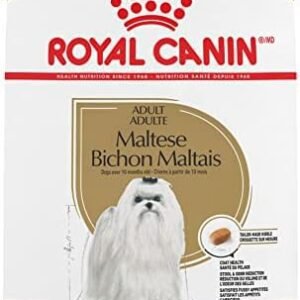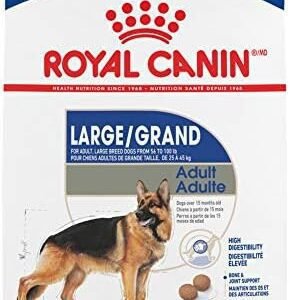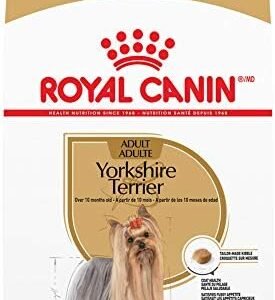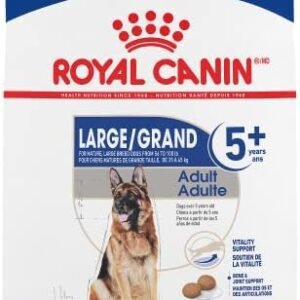Introduction
Are you a pineapple lover? The sweet and tangy tropical fruit that instantly conjures images of sandy beaches and swaying palm trees. But while pineapple is a delicious treat for humans, can our furry companions, our faithful canine friends, share in this delightful snack? In this article, we’ll delve into the world of pineapples and explore whether dogs can safely enjoy this exotic fruit. We’ll uncover the benefits and potential risks of feeding pineapples to your four-legged buddy, providing you with the knowledge you need to make informed decisions about your dog’s diet.

Dogs and their dietary needs have been the subject of much discussion. As pet owners, it’s our responsibility to ensure that we provide our dogs with safe, nutritious, and delicious food. So, can dogs eat pineapples? Is this tropical delight a safe and healthy addition to their diet, or should it be kept far from their food bowl?
In this article, we will answer these questions and more. We will explore the pros and cons of feeding pineapples to your dog, understanding how much is too much, and what to do if your canine friend gets a little too curious about this intriguing fruit. Our aim is to provide you with valuable insights and information that will help you make the best choices for your beloved pet. So, let’s embark on this flavorful journey and uncover the secrets of pineapples for dogs.
Table of Contents
Can Dogs Eat Pineapples?
Can dogs safely indulge in pineapples, or should this tropical treat remain forbidden territory for our four-legged friends? Let’s explore the compatibility of pineapples with our canine companions and understand the key facts about this sweet fruit.
Nutrition Facts: To better understand the potential benefits of feeding pineapples to your dog, let’s take a closer look at their nutritional content. Pineapples are a good source of essential nutrients, including dietary fiber, vitamin C, and vitamin B6. They also contain minerals such as manganese and copper. Here’s a brief overview of the key nutrients found in pineapples:
| Nutrient | Amount per 100g |
|---|---|
| Calories | 50 kcal |
| Dietary Fiber | 1.4 grams |
| Vitamin C | 47.8 mg |
| Vitamin B6 | 0.112 mg |
| Manganese | 0.927 mg |
| Copper | 0.110 mg |
Drawbacks: Despite the potential benefits, pineapples also have some drawbacks. They are relatively high in natural sugars, which may not be ideal for dogs, especially those with diabetes or weight issues. Furthermore, the acidity in pineapples can be harsh on a dog’s digestive system if consumed in excess. This can lead to stomach upset or gastrointestinal distress. Therefore, it’s essential to offer pineapples as an occasional treat rather than a regular part of your dog’s daily diet. Always consult your veterinarian before making any significant dietary changes for your pet
In the next section, we’ll delve deeper into the portion sizes and frequency with which you can offer pineapples to your dog, ensuring their safety and enjoyment.
How much Pineapples Can a Dog Eat?
Now that we’ve established that pineapples can be a part of your dog’s diet, it’s crucial to understand how much is appropriate and how to introduce them to your furry friend. As with many things in life, moderation is the key when it comes to feeding pineapples to your dog.
Moderation is Key: Treats, including pineapples, should not account for more than 10% of your dog’s daily calorie intake. This ensures that they receive the essential nutrients from their regular dog food while enjoying the occasional pineapple treat. Excessive pineapple consumption can lead to an imbalance in their diet and may cause weight issues or other health concerns.
Start Small: It’s advisable to start with a small piece of pineapple and observe how your dog reacts to it. Not all dogs have the same level of tolerance for new foods. Some may be naturally drawn to the sweet taste of pineapples, while others might need some time to acquire a taste for it. It’s essential to ensure that your dog enjoys pineapples and doesn’t experience any adverse reactions.
Preparation: Before offering pineapples to your dog, it’s important to prepare them appropriately. Fresh, raw pineapple is the best option. Canned pineapple, particularly those stored in syrup, should be avoided due to their high sugar content. Remove the tough outer skin and the core, which can be difficult for dogs to chew and digest. Cut the pineapple into bite-sized, manageable pieces to prevent choking hazards.
Consider Your Dog’s Size and Breed: The size and breed of your dog can influence how much pineapple they can tolerate. Larger dogs can generally handle more pineapple than smaller ones. However, regardless of their size, it’s crucial to pay attention to their individual reactions. If you have a small dog, be extra cautious about the serving size. For example, a Great Dane can consume more pineapple in one serving than a Chihuahua.
Appropriate Serving Sizes: Serving sizes of pineapples should be based on your dog’s weight. As a general guideline, you can offer approximately 1-2 small chunks of fresh pineapple to a small dog (around 10 pounds) and increase the portion accordingly for larger dogs. Always be mindful of the calorie content and aim to keep pineapple treats as a small part of their overall diet.
Introducing pineapples to your dog’s diet should be a gradual process. Start with a small amount and pay close attention to how your dog reacts. In the following section, we’ll explore potential risks and considerations related to feeding pineapples to your canine companion.
Risks of Feeding Pineapples to Dogs
While pineapples can be a delicious and nutritious treat for dogs, like any food, they come with potential risks. In this section, we will explore some of the risks and considerations associated with feeding pineapples to your furry friend.
Food Allergies: Just as humans can have allergies to certain foods, dogs can also develop allergies or sensitivities. While pineapples are not a common allergen for dogs, it’s possible for some dogs to be allergic to them. Symptoms of a pineapple allergy may include itching, hives, swelling, or digestive upset. If you suspect that your dog may have a pineapple allergy, consult with your veterinarian.
Gastrointestinal Distress: One of the most common short-term risks of feeding pineapples to dogs is gastrointestinal distress. Pineapples are high in fiber and contain enzymes like bromelain, which can sometimes lead to stomach upset, including diarrhea or vomiting. To minimize this risk, it’s essential to introduce pineapples gradually into your dog’s diet and observe their reactions.
Bromelain and Allergic Reactions: While bromelain, an enzyme found in pineapples, can offer various health benefits, it can also pose a risk to some dogs. Bromelain may cause allergic reactions in certain individuals. Watch for signs such as itching, swelling, or difficulty breathing, and consult with your veterinarian if you suspect your dog is having an adverse reaction.
Potential Issues: Besides the risks mentioned above, there are some potential issues associated with feeding pineapples to dogs. These include overindulgence leading to excess calorie intake, which can result in obesity. Also, the high sugar content in some canned or syrup-soaked pineapples can contribute to weight gain and dental problems. Additionally, the tough core of the pineapple can be a choking hazard or cause digestive issues.
Signs and Symptoms of Adverse Reactions: When feeding your dog pineapples, it’s essential to be aware of signs and symptoms of adverse reactions. These may include:
- Itching and Hives: If your dog experiences itching, hives, or skin redness after eating pineapple, it could indicate an allergic reaction.
- Vomiting and Diarrhea: Gastrointestinal distress, such as vomiting and diarrhea, may occur, particularly if your dog consumes a large quantity of pineapples.
- Swelling: Swelling around the face, especially the lips and eyes, can be a sign of an allergic reaction.
- Difficulty Breathing: In severe cases of allergic reactions, dogs may experience difficulty breathing, which is a medical emergency.
- Lethargy: If your dog suddenly becomes lethargic after eating pineapples, it could be a sign of discomfort or an adverse reaction.
It’s crucial to remember that not all dogs will experience these issues, and many can safely enjoy pineapples as an occasional treat. To minimize risks, follow the guidelines discussed earlier in this article, including starting with small servings and introducing them gradually. In the next section, we’ll explore how to make feeding pineapples to your dog an enjoyable and safe experience.
How to Feed Pineapples to Your Dog and Make It Enjoyable
Now that we’ve explored the potential risks and benefits of feeding pineapples to dogs, let’s dive into how you can safely introduce this tropical fruit into your dog’s diet and make it a delightful experience for them.

Serving Methods:
Fresh Pineapple Chunks: Fresh pineapple chunks can make for a healthy and refreshing treat. Ensure you remove the tough outer skin and core. Cut the pineapple into small, bite-sized pieces to avoid choking hazards.
Frozen Pineapple Chunks: Many dogs love the cold, refreshing taste of frozen pineapple chunks, especially on hot days. They can provide relief from the heat and serve as a tasty snack.
Canned Pineapples: If you choose to use canned pineapple, make sure it’s canned in water or its juice, not syrup, to avoid excessive sugar intake. Rinse the pineapple to remove any excess sugar before serving it to your dog.
- Pineapple Puree: You can blend fresh pineapple into a puree and mix it with your dog’s regular food for added flavor. This is a great way to incorporate pineapple into their diet while ensuring they get all the nutritional benefits.
Homemade Treats and Snacks:
Pineapples can be used to create homemade treats and snacks that your dog will love. Here are a few creative ideas:
Pineapple and Yogurt Popsicles: Blend fresh pineapple with plain, unsweetened yogurt and freeze the mixture in ice cube trays. These frozen treats are not only delicious but also provide the benefits of probiotics from the yogurt.
Pineapple and Coconut Bites: Combine finely chopped pineapple with unsweetened shredded coconut. Form small, bite-sized balls and refrigerate them for a cool and tropical treat.
Pineapple Smoothie: Create a pineapple smoothie by blending fresh pineapple with a banana and a splash of water. You can even add a dollop of plain yogurt for creaminess. Pour the smoothie into ice cube trays and freeze it for a refreshing and nutritious snack.
- Pineapple and Oatmeal Cookies: Make homemade dog cookies using oatmeal, fresh pineapple chunks, and a little peanut butter. Dogs adore these nutritious treats.
Enhancing Regular Meals:
Pineapples can be a tasty addition to your dog’s regular meals. You can sprinkle small pineapple chunks on top of their kibble or mix pineapple puree into their wet food. This enhances the flavor and introduces the nutritional benefits of pineapples without causing digestive discomfort.
Recipes and IdeasHere are a few simple recipes and ideas to incorporate pineapples into your dog’s diet:Pineapple Turkey Delight: Cook lean ground turkey and mix it with fresh, finely chopped pineapple. Serve this protein-rich meal as an occasional treat.Pineapple and Spinach Smoothie: Blend fresh pineapple with spinach for a nutrient-packed smoothie. You can add water or low-sodium chicken broth for the desired consistency.Pineapple and Blueberry Salad: Combine small pieces of pineapple with blueberries for a colorful and healthy snack. Blueberries are also safe for dogs and offer antioxidant benefits.Remember that the key to feeding pineapples to your dog is moderation. Even though they can enjoy this sweet fruit, it should remain a small part of their diet. Excessive consumption can lead to digestive issues or an excessive intake of natural sugars.
In the next section, we’ll address common questions and concerns about dogs eating pineapples, providing answers to help you navigate this delightful tropical treat for your furry friend.
FAQs
1. Can Dogs Eat Pineapples Safely?
2. Are There Any Nutritional Benefits for Dogs in Pineapples?
Pineapples are a good source of essential vitamins and minerals, including vitamin C, vitamin B6, and dietary fiber. These nutrients can contribute to a dog’s overall health.
3. How Should I Serve Pineapples to My Dog?
You can serve pineapples to your dog in various ways. Fresh, bite-sized chunks, frozen chunks, or even pineapple puree are all safe options. Ensure the pineapple is cut into small pieces to avoid choking hazards.
4. Can I Feed My Dog Canned Pineapples?
Canned pineapples can be fed to dogs, but it’s essential to choose pineapple canned in water or its juice, not syrup. Rinse the pineapple to remove excess sugar before offering it to your dog.
5. What’s the Recommended Serving Size of Pineapples for Dogs?
The recommended serving size of pineapples for dogs depends on their size and weight. As a general guideline, start with small amounts, around 1-2 small chunks for small dogs and 3-4 for larger breeds. Observe how your dog reacts before increasing the quantity.
6. Are There Any Risks of Feeding Pineapples to Dogs?
While pineapples are safe in moderation, excessive consumption can lead to digestive discomfort due to their high fiber content. Some dogs may be allergic to pineapples, so always monitor your pet when introducing this fruit.
7. Can I Feed My Dog Pineapple Skin or Core?
The tough outer skin and core of a pineapple are not safe for dogs. They can be challengingto digest and pose a choking hazard. Always remove these parts before offering pineapples to your dog.
8. Are There Any Signs of Allergic Reactions to Pineapples in Dogs?
Signs of allergic reactions may include itching, hives, swelling, diarrhea, or vomiting. If you notice any of these symptoms after your dog consumes pineapples, consult your veterinarian.
9. Can Pineapples Help with a Dog’s Bad Breath?
The natural enzymes in pineapples, such as bromelain, can help with bad breath by breaking down odor-causing bacteria in a dog’s mouth. However, always use pineapples as a part of your dog’s overall dental care routine.
10. Can Dogs with Diabetes Eat Pineapples?
Pineapples contain natural sugars, so they should be given sparingly to dogs with diabetes. It’s crucial to monitor their blood sugar levels and consult your veterinarian before introducing pineapples into their diet.
In conclusion, dogs can enjoy the occasional pineapple treat, provided it’s served in moderation and prepared safely. Now that we’ve answered these frequently asked questions, we’ll summarize the main points of this article and offer some tips on alternative fruits or treats that are safe and healthy for dogs.
Conclusion
In conclusion, we’ve explored the fascinating world of dogs and pineapples. As you’ve learned, dogs can indeed eat pineapples in moderation, and this tropical fruit can offer some nutritional benefits. Pineapples are a safe and healthy treat for your furry friend when served correctly. However, it’s crucial to be mindful of the potential risks, including digestive discomfort and allergies. Understanding the dos and don’ts of feeding pineapples to your dog is essential for their well-being.
While pineapples are a tasty and nutritious option, they’re not essential for your dog’s health. If you decide to treat your pup to some pineapples, always do so in moderation, and monitor their reaction. Additionally, ensure you remove the tough outer skin, core, and any seeds to make it safer and more enjoyable for your dog.
If you’re looking for alternative fruits or treats for your dog, consider options such as blueberries, watermelon, or small apple slices. These fruits are lower in sugar and acidity than pineapples, making them great choices for occasional snacks. Just be sure to remove any seeds or cores before offering them to your dog.
We hope this article has provided valuable insights into the world of dogs and pineapples. Do you have any questions or comments about feeding pineapples to your dog? Share your experiences with us on our social media pages, and let’s keep our furry friends happy and healthy together.
























